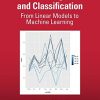(Ebook PDF) Elements of Information Theory Second Edition by Thomas Cover, Joy Thomas ISBN 9780471748816 0471748811 full chapters
$50.00 Original price was: $50.00.$35.00Current price is: $35.00.
(Ebook PDF) Elements of Information Theory Second Edition by Thomas Cover, Joy Thomas -Ebook PDF Instant Download/Delivery:9780471748816, 0471748811
Instant download Full Chapter of Elements of Information Theory Second Edition after payment

Product details:
ISBN 10:0471748811
ISBN 13:9780471748816
Author: Thomas M. Cover; Joy A. Thomas
The latest edition of this classic is updated with new problem sets and material
The Second Edition of this fundamental textbook maintains the book’s tradition of clear, thought-provoking instruction. Readers are provided once again with an instructive mix of mathematics, physics, statistics, and information theory.
All the essential topics in information theory are covered in detail, including entropy, data compression, channel capacity, rate distortion, network information theory, and hypothesis testing. The authors provide readers with a solid understanding of the underlying theory and applications. Problem sets and a telegraphic summary at the end of each chapter further assist readers. The historical notes that follow each chapter recap the main points.
The Second Edition features:
* Chapters reorganized to improve teaching
* 200 new problems
* New material on source coding, portfolio theory, and feedback capacity
* Updated references
Now current and enhanced, the Second Edition of Elements of Information Theory remains the ideal textbook for upper-level undergraduate and graduate courses in electrical engineering, statistics, and telecommunications.
An Instructor’s Manual presenting detailed solutions to all the problems in the book is available from the Wiley editorial department.
Table of Contents:
- 1 Introduction and Preview
- 1.1 Preview of the Book
- 2 Entropy, Relative Entropy, and Mutual Information
- 2.1 Entropy
- 2.2 Joint Entropy and Conditional Entropy
- 2.3 Relative Entropy and Mutual Information
- 2.4 Relationship Between Entropy and Mutual Information
- 2.5 Chain Rules for Entropy, Relative Entropy, and Mutual Information
- 2.6 Jensen’s Inequality and Its Consequences
- 2.7 Log Sum Inequality and Its Applications
- 2.8 Data-Processing Inequality
- 2.9 Sufficient Statistics
- 2.10 Fano’s Inequality
- Summary
- Problems
- Historical Notes
- 3 Asymptotic Equipartition Property
- 3.1 Asymptotic Equipartition Property Theorem
- 3.2 Consequences of the AEP: Data Compression
- 3.3 High-Probability Sets and the Typical Set
- Summary
- Problems
- Historical Notes
- 4 Entropy Rates of a Stochastic Process
- 4.1 Markov Chains
- 4.2 Entropy Rate
- 4.3 Example: Entropy Rate of a Random Walk on a Weighted Graph
- 4.4 Second Law of Thermodynamics
- 4.5 Functions of Markov Chains
- Summary
- Problems
- Historical Notes
- 5 Data Compression
- 5.1 Examples of Codes
- 5.2 Kraft Inequality
- 5.3 Optimal Codes
- 5.4 Bounds on the Optimal Code Length
- 5.5 Kraft Inequality for Uniquely Decodable Codes
- 5.6 Huffman Codes
- 5.7 Some Comments on Huffman Codes
- 5.8 Optimality of Huffman Codes
- 5.9 Shannon–Fano–Elias Coding
- 5.10 Competitive Optimality of the Shannon Code
- 5.11 Generation of Discrete Distributions from Fair Coins
- Summary
- Problems
- Historical Notes
- 6 Gambling and Data Compression
- 6.1 The Horse Race
- 6.2 Gambling and Side Information
- 6.3 Dependent Horse Races and Entropy Rate
- 6.4 The Entropy of English
- 6.5 Data Compression and Gambling
- 6.6 Gambling Estimate of the Entropy of English
- Summary
- Problems
- Historical Notes
- 7 Channel Capacity
- 7.1 Examples of Channel Capacity
- 7.1.1 Noiseless Binary Channel
- 7.1.2 Noisy Channel with Nonoverlapping Outputs
- 7.1.3 Noisy Typewriter
- 7.1.4 Binary Symmetric Channel
- 7.1.5 Binary Erasure Channel
- 7.2 Symmetric Channels
- 7.3 Properties of Channel Capacity
- 7.4 Preview of the Channel Coding Theorem
- 7.5 Definitions
- 7.6 Jointly Typical Sequences
- 7.7 Channel Coding Theorem
- 7.8 Zero-Error Codes
- 7.9 Fano’s Inequality and the Converse to the Coding Theorem
- 7.10 Equality in the Converse to the Channel Coding Theorem
- 7.11 Hamming Codes
- 7.12 Feedback Capacity
- 7.13 Source–Channel Separation Theorem
- Summary
- Problems
- Historical Notes
- 8 Differential Entropy
- 8.1 Definitions
- 8.2 AEP for Continuous Random Variables
- 8.3 Relation of Differential Entropy to Discrete Entropy
- 8.4 Joint and Conditional Differential Entropy
- 8.5 Relative Entropy and Mutual Information
- 8.6 Properties of Differential Entropy, Relative Entropy, and Mutual Information
- Summary
- Problems
- Historical Notes
- 9 Gaussian Channel
- 9.1 Gaussian Channel: Definitions
- 9.2 Converse to the Coding Theorem for Gaussian Channels
- 9.3 Bandlimited Channels
- 9.4 Parallel Gaussian Channels
- 9.5 Channels with Colored Gaussian Noise
- 9.6 Gaussian Channels with Feedback
- Summary
- Problems
- Historical Notes
- 10 Rate Distortion Theory
- 10.1 Quantization
- 10.2 Definitions
- 10.3 Calculation of the Rate Distortion Function
- 10.3.1 Binary Source
- 10.3.2 Gaussian Source
- 10.3.3 Simultaneous Description of Independent Gaussian Random Variables
- 10.4 Converse to the Rate Distortion Theorem
- 10.5 Achievability of the Rate Distortion Function
- 10.6 Strongly Typical Sequences and Rate Distortion
- 10.7 Characterization of the Rate Distortion Function
- 10.8 Computation of Channel Capacity and the Rate Distortion Function
- Summary
- Problems
- Historical Notes
- 11 Information Theory and Statistics
- 11.1 Method of Types
- 11.2 Law of Large Numbers
- 11.3 Universal Source Coding
- 11.4 Large Deviation Theory
- 11.5 Examples of Sanov’s Theorem
- 11.6 Conditional Limit Theorem
- 11.7 Hypothesis Testing
- 11.8 Chernoff–Stein Lemma
- 11.9 Chernoff Information
- 11.10 Fisher Information and the Cramér–Rao Inequality
- Summary
- Problems
- Historical Notes
- 12 Maximum Entropy
- 12.1 Maximum Entropy Distributions
- 12.2 Examples
- 12.3 Anomalous Maximum Entropy Problem
- 12.4 Spectrum Estimation
- 12.5 Entropy Rates of a Gaussian Process
- 12.6 Burg’s Maximum Entropy Theorem
- Summary
- Problems
- Historical Notes
- 13 Universal Source Coding
- 13.1 Universal Codes and Channel Capacity
- 13.2 Universal Coding for Binary Sequences
- 13.3 Arithmetic Coding
- 13.4 Lempel–Ziv Coding
- 13.4.1 Sliding Window Lempel–Ziv Algorithm
- 13.4.2 Tree-Structured Lempel–Ziv Algorithms
- 13.5 Optimality of Lempel–Ziv Algorithms
- 13.5.1 Sliding Window Lempel–Ziv Algorithms
- 13.5.2 Optimality of Tree-Structured Lempel–Ziv Compression
- Summary
- Problems
- Historical Notes
- 14 Kolmogorov Complexity
- 14.1 Models of Computation
- 14.2 Kolmogorov Complexity: Definitions and Examples
- 14.3 Kolmogorov Complexity and Entropy
- 14.4 Kolmogorov Complexity of Integers
- 14.5 Algorithmically Random and Incompressible Sequences
- 14.6 Universal Probability
- 14.7 Kolmogorov complexity
- 14.8 Ω
- 14.9 Universal Gambling
- 14.10 Occam’s Razor
- 14.11 Kolmogorov Complexity and Universal Probability
- 14.12 Kolmogorov Sufficient Statistic
- 14.13 Minimum Description Length Principle
- Summary
- Problems
- Historical Notes
- 15 Network Information Theory
- 15.1 Gaussian Multiple-User Channels
- 15.1.1 Single-User Gaussian Channel
- 15.1.2 Gaussian Multiple-Access Channel with m Users
- 15.1.3 Gaussian Broadcast Channel
- 15.1.4 Gaussian Relay Channel
- 15.1.5 Gaussian Interference Channel
- 15.1.6 Gaussian Two-Way Channel
- 15.2 Jointly Typical Sequences
- 15.3 Multiple-Access Channel
- 15.3.1 Achievability of the Capacity Region for the Multiple-Access Channel
- 15.3.2 Comments on the Capacity Region for the Multiple-Access Channel
- 15.3.3 Convexity of the Capacity Region of the Multiple-Access Channel
- 15.3.4 Converse for the Multiple-Access Channel
- 15.3.5 m-User Multiple-Access Channels
- 15.3.6 Gaussian Multiple-Access Channels
- 15.4 Encoding of Correlated Sources
- 15.4.1 Achievability of the Slepian–Wolf Theorem
- 15.4.2 Converse for the Slepian–Wolf Theorem
- 15.4.3 Slepian–Wolf Theorem for Many Sources
- 15.4.4 Interpretation of Slepian–Wolf Coding
- 15.5 Duality Between Slepian–Wolf Encoding and Multiple-Access Channels
- 15.6 Broadcast Channel
- 15.6.1 Definitions for a Broadcast Channel
- 15.6.2 Degraded Broadcast Channels
- 15.6.3 Capacity Region for the Degraded Broadcast Channel
- 15.7 Relay Channel
- 15.8 Source Coding with Side Information
- 15.9 Rate Distortion with Side Information
- 15.10 General Multiterminal Networks
- Summary
- Problems
- Historical Notes
- 16 Information Theory and Portfolio Theory
- 16.1 The Stock Market: Some Definitions
- 16.2 Kuhn–Tucker Characterization of the Log-Optimal Portfolio
- 16.3 Asymptotic Optimality of the Log-Optimal Portfolio
- 16.4 Side Information and the Growth Rate
- 16.5 Investment in Stationary Markets
- 16.6 Competitive Optimality of the Log-Optimal Portfolio
- 16.7 Universal Portfolios
- 16.7.1 Finite-Horizon Universal Portfolios
- 16.7.2 Horizon-Free Universal Portfolios
- 16.8 Shannon–McMillan–Breiman Theorem (General AEP)
- Summary
- Problems
- Historical Notes
- 17 Inequalities in Information Theory
- 17.1 Basic Inequalities of Information Theory
- 17.2 Differential Entropy
- 17.3 Bounds on Entropy and Relative Entropy
- 17.4 Inequalities for Types
- 17.5 Combinatorial Bounds on Entropy
- 17.6 Entropy Rates of Subsets
- 17.7 Entropy and Fisher Information
- 17.8 Entropy Power Inequality and Brunn–Minkowski Inequality
- 17.9 Inequalities for Determinants
- 17.10 Inequalities for Ratios of Determinants
People also search:
elements of information theory pdf
elements of information theory solutions
elements of information theory second edition pdf
elements of information theory in digital image processing
elements of information theory in image compression
Tags:
Thomas Cover,Joy Thomas,Elements,Information Theory

